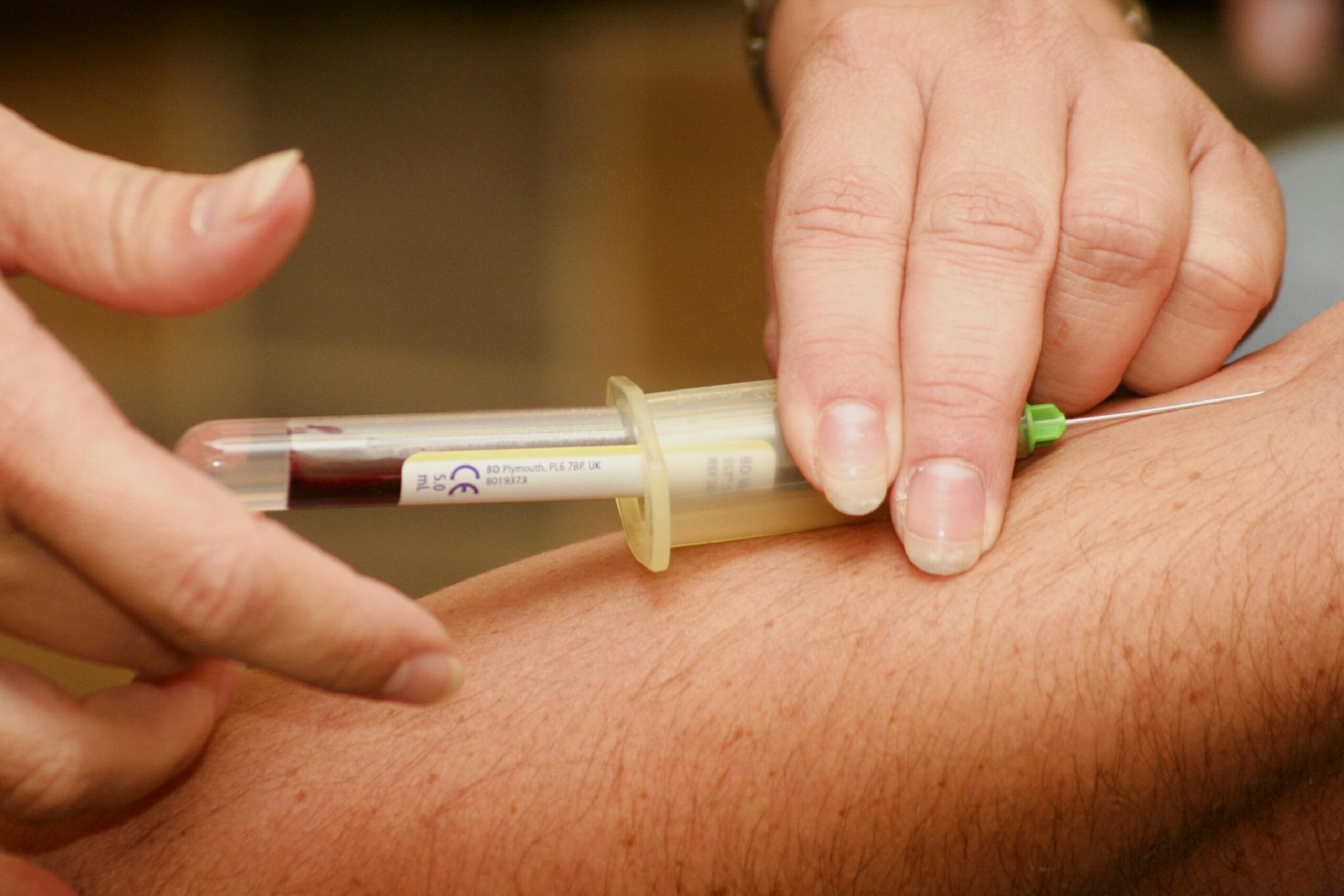Are you curious about the intricate anatomy of the male reproductive system? Well, one specific question that may have crossed your mind is, “Does the prostate sit above or below the seminal vesicles?”. Understanding the precise placement of these organs is essential for comprehending their functions and potential health concerns. In this article, we will explore the anatomical relationship between the prostate and the seminal vesicles, providing you with a clear and concise understanding of their positioning. Get ready to uncover the fascinating world of the male reproductive system!

Anatomy of the Male Reproductive System
The male reproductive system is a complex structure that plays a vital role in the process of human reproduction. It is responsible for the production, storage, and transportation of sperm. Understanding the anatomy of the male reproductive system is crucial to comprehend its functions and the potential disorders that can affect it.
Understanding the structure of the male reproductive system
The male reproductive system consists of various organs, including the testes, epididymis, vas deferens, prostate gland, seminal vesicles, and penis. Each organ has a specific function that contributes to the overall process of reproduction. In this article, we will focus on two important organs: the prostate gland and the seminal vesicles.
Parts of the male reproductive system
The male reproductive system comprises several parts, all of which work together to achieve successful reproduction. These parts include the testes, which are responsible for producing sperm, the epididymis, which stores and matures sperm, the vas deferens, which transports sperm from the epididymis to the urethra, the prostate gland, which produces seminal fluid, and the seminal vesicles, which also contribute to the production of semen. Understanding the role and function of each part is essential in comprehending the overall function of the male reproductive system.
Understanding the Function of the Prostate
The prostate gland is a crucial component of the male reproductive system. It is a small, walnut-sized organ that is located just below the bladder and surrounds the urethra. The main function of the prostate gland is to produce seminal fluid, which is a major component of semen.
Role of the prostate in the male reproductive system
The prostate gland plays a vital role in male reproductive health. It secretes a thin, milky fluid that helps to nourish and protect sperm. During ejaculation, the muscles of the prostate gland contract, allowing the release of seminal fluid into the urethra, where it combines with sperm to form semen. The prostate also contains smooth muscles that aid in the expulsion of semen during ejaculation.
How prostate functions
The prostate gland functions by producing and secreting seminal fluid, which is essential for the viability and motility of sperm. When sperm is ejaculated, it passes through the prostate gland and mixes with the seminal fluid, creating semen. The prostate gland also produces a specific enzyme called prostate-specific antigen (PSA), which helps to liquefy semen, allowing the sperm to swim freely.
Detailed Anatomy of the Prostate
To understand the role and function of the prostate gland, it is important to have knowledge about its anatomy.
Location of the prostate
The prostate gland is located just below the bladder and in front of the rectum. It surrounds the urethra, the tube that carries urine from the bladder out of the body, and also serves as the passageway for semen during ejaculation.
Size and shape of the prostate
The size and shape of the prostate gland varies among individuals. In general, it is approximately the size of a walnut, although it can enlarge with age. The shape of the prostate can be described as resembling a chestnut, with a rounded, slightly flattened appearance.
Structure of the prostate
The prostate gland consists of several lobes, including the anterior lobe, central lobe, and posterior lobe. It is composed of glandular tissue, muscle fibers, and connective tissue. The glandular tissue is responsible for producing and secreting seminal fluid, while the muscle fibers aid in the contraction and expulsion of semen during ejaculation.
Understanding the Function of the Seminal Vesicles
Apart from the prostate gland, the seminal vesicles also play a crucial role in the male reproductive system. The seminal vesicles are a pair of elongated, coiled structures located behind the bladder and above the prostate gland.
Role of the seminal vesicles in the male reproductive system
The seminal vesicles play a significant role in the production of semen. They secrete a viscous fluid that contains fructose, prostaglandins, and other substances that provide energy and nourishment for sperm. The fluid produced by the seminal vesicles makes up a significant portion of semen and plays a vital role in enhancing the motility of sperm.
How seminal vesicles function
The seminal vesicles function by producing and storing a fluid that helps to nourish and facilitate the movement of sperm. During ejaculation, the muscles surrounding the seminal vesicles contract, forcing the fluid into the ejaculatory ducts, where it combines with sperm from the testes and secretions from the prostate gland to form semen.

Detailed Anatomy of the Seminal Vesicles
To understand the role and function of the seminal vesicles, it is important to have knowledge about their anatomy.
Location of the seminal vesicles
The seminal vesicles are located behind the bladder and above the prostate gland. They lie on either side of the midline, and their ducts join with the vas deferens to form the ejaculatory ducts.
Size and shape of the seminal vesicles
The seminal vesicles are elongated, tube-like structures that are approximately 5 to 7 centimeters in length. They have a convoluted, coiled appearance and are soft and sacculated.
Structure of the seminal vesicles
The seminal vesicles are composed of a combination of glandular tissue and smooth muscle. The glandular tissue is responsible for the production and secretion of seminal fluid, while the smooth muscle aids in the contraction and ejaculation of the fluid during sexual climax.
The Prostate and Seminal Vesicles' Relation
Understanding the relationship between the prostate gland and the seminal vesicles is crucial to comprehend their significance in the male reproductive system.
Positioning of the prostate and seminal vesicles
The prostate gland is positioned just below the bladder and surrounds the urethra, while the seminal vesicles are located above the prostate gland and behind the bladder. The close proximity of these organs allows for a coordinated function in the production and ejaculation of semen.
Interaction between the prostate and seminal vesicles
The prostate and seminal vesicles work together to produce and store components of semen. The prostate gland secretes seminal fluid, which contributes to the overall volume of semen, while the seminal vesicles secrete a fluid rich in nutrients and substances that energize and nourish sperm. During ejaculation, the fluids produced by both organs combine with sperm from the testes to form semen, which is then expelled from the body.

Comparing the Prostate and the Seminal Vesicles
While the prostate gland and the seminal vesicles both play essential roles in the male reproductive system, there are notable differences between the two.
Comparison of the roles
The prostate gland primarily produces seminal fluid, which nourishes and protects sperm, while the seminal vesicles secrete a fluid rich in nutrients that energize and nourish sperm. Both organs contribute to the production of semen, but the fluids they produce carry out distinct functions.
Comparison of size and location
The prostate gland is typically about the size of a walnut and is located just below the bladder and surrounding the urethra. On the other hand, the seminal vesicles are elongated structures that are approximately 5 to 7 centimeters in length and are located above the prostate gland and behind the bladder.
Importance of Prostate and Seminal Vesicles Placement
The placement of the prostate gland and the seminal vesicles within the male reproductive system has significant implications on their role and function.
Why the prostate placement matters
The positioning of the prostate gland just below the bladder and surrounding the urethra allows for the production and secretion of seminal fluid directly into the urethra. This enables the mix with sperm and facilitates the formation of semen. Additionally, this placement contributes to the expulsion of semen during ejaculation.
Why the seminal vesicles placement matters
The location of the seminal vesicles behind the bladder and above the prostate gland allows for the secretion and storage of a fluid rich in nutrients and substances that nourish and energize sperm. This fluid plays a crucial role in enhancing the motility of sperm.
Common Conditions Affecting the Prostate and Seminal Vesicles
There are various conditions that can affect the prostate gland and seminal vesicles, leading to potential health issues and reproductive problems.
Prostate disorders
The prostate gland can be affected by several disorders, including benign prostatic hyperplasia (BPH), prostatitis, and prostate cancer. BPH is a non-cancerous enlargement of the prostate that can cause urinary symptoms. Prostatitis refers to inflammation of the prostate, which can be caused by infection or other factors. Prostate cancer is the most common cancer among men and can affect the prostate gland.
Seminal vesicle disorders
Disorders of the seminal vesicles are relatively rare, but they can occur. These disorders can include cysts, inflammation, and infections, which may cause pain, discomfort, and affect fertility.
Conclusion
In conclusion, the prostate gland and the seminal vesicles play crucial roles in the male reproductive system. The prostate gland produces seminal fluid, which nourishes and protects sperm, while the seminal vesicles secrete a fluid rich in nutrients that energize and nourish sperm. The close proximity and coordination between these organs are essential for the production and expulsion of semen. Understanding the anatomy, function, and relationship between the prostate gland and the seminal vesicles allows for a comprehensive understanding of their significance in male reproductive health.

